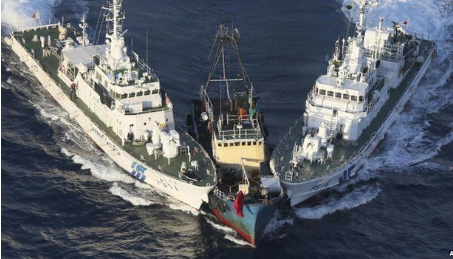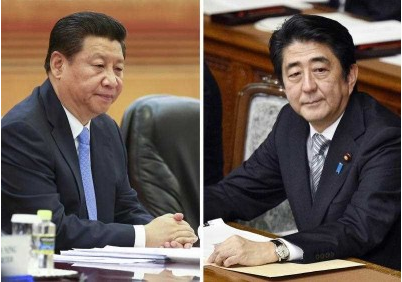Diplomacy
After the establishment of the People’s Republic of China (PRC) in 1949, relations with Japan changed from hostility and an absence of contact to cordiality and extremely close cooperation in many fields. Japan was defeated and Japanese military power dismantled, but the PRC continued to view Japan as a potential threat because of the presence of United States Forces in East China Sea.
In December 1971, the Chinese and Japanese trade liaison offices began to discuss the possibility of restoring diplomatic trade relations, and in July 1972, Kakuei Tanaka succeeded Eisaku Satō as a new Japanese Prime Minister. Tanaka assumed a normalization of the Sino-Japanese relations. Furthermore, the 1972 Nixon visit to China encouraged the normalization process. His visit to Beijing culminated in the signing a joint statement on September 29, 1972. It established diplomatic relations between Japan and the PRC. From China’s perspective, an impressive compromise was attained. The Japanese agreed to most of the PRC’s demands, including the political status of Taiwan. Subsequently, the bilateral economic relationships grew rapidly.
Territorial Disputes
2012 Purchase of the Senkaku islands
Both China and Japan claimed sovereignty over East China Sea islets that is referred to as the Senkaku Islands by Japan and Diaoyu Islands by China. Tensions have risen since September 2012, when the Japanese government purchased three of the islets from a private Japanese owner, resulting in widespread anti-Japan demonstrations in China. Then Prime Minister Yoshihiko Noda purchased the islets on behalf of the central government to preempt Tokyo Governor Shintaro Ishihara’s plan to purchase them with Tokyo municipal funds. Ishihara is well known for his provocative nationalist actions, and Noda feared that Ishihara would try to occupy the islands or otherwise use them to provoke China. In September 2012, General Xu Caihou, vice chairman of the Central Military Commission, told the Chinese military to “prepared for any possible military combat”. Relations deteriorated further after the purchase of the Senkaku islands by the Japanese government, to the extent that China decided to skip International Monetary Fund (IMF) meetings held in Japan. Trade relations deteriorated badly during the latter half of 2012 and Chinese government aircraft intruded into disputed airspace for the first time since 1958.
2014 Chinese Fighter Jets Scrambled over East China Sea
Japanese reconnaissance planes and Chinese fighter jets came perilously close in an overlapping disputed airspace over the East China Sea in late May 2014. The incident occurred as China was taking part in joint maritime exercises with Russia. China and Japan each accused the other of causing a potentially dangerous situation. The airspace where the close encounter took place is claimed by both countries as part of their “air defense identification zones.” Beijing and Tokyo exchanged protests over the incident.

What is China’s Claim?
China says that the islands have been part of its territory since ancient times, serving as important fishing grounds administered by the province of Taiwan.
Taiwan was ceded to Japan in 1895 in the Treaty of Shimonoseki, after the Sino-Japanese war. When Taiwan was later returned in the Treaty of San Francisco, China said the islands should have been returned too. Beijing says Taiwan’s Kuomintang leader Chiang Kai-shek did not raise the issue, even when the islands were named in the later Okinawa reversion deal, because he depended on the US, who is a major ally of Japan, for support.
Separately, Taiwan also claims the islands.

What is Japan’s Claim?
Japan argues that it surveyed the islands for 10 years in the 19th Century and determined that they were uninhabited. On January 14, 1895, Japan erected a sovereignty marker and formally incorporated the islands into Japanese territory.
After World War II, Japan renounced claims to a number of territories and islands including Taiwan in the 1951 Treaty of San Francisco. These islands, however, came under US trusteeship and were returned to Japan in 1971 under the Okinawa reversion deal.
Japan thinks China raised no objections to the San Francisco deal. And it says that it is only since the 1970s, when the issue of oil resources in the area emerged, that Chinese and Taiwanese authorities began pressing their claims.
Video: Japan’s Shinzo Abe and China’s Xi Jinping share frosty handshake at ice-breaking talks
http://www.theguardian.com/world/video/2014/nov/10/japan-shinzo-abe-china-xi-jinping-handshake-video